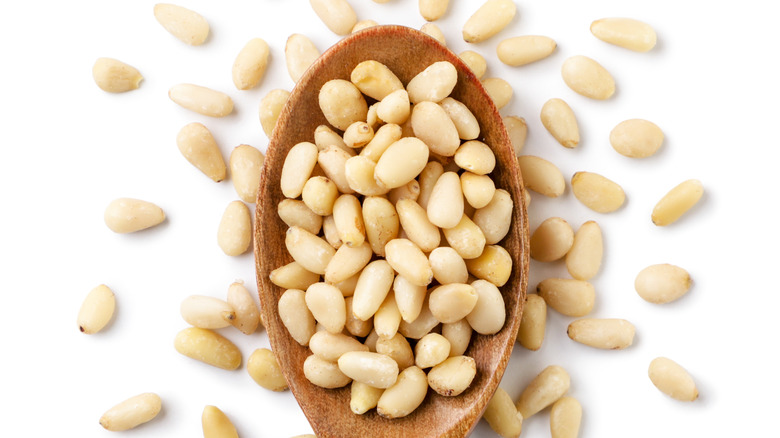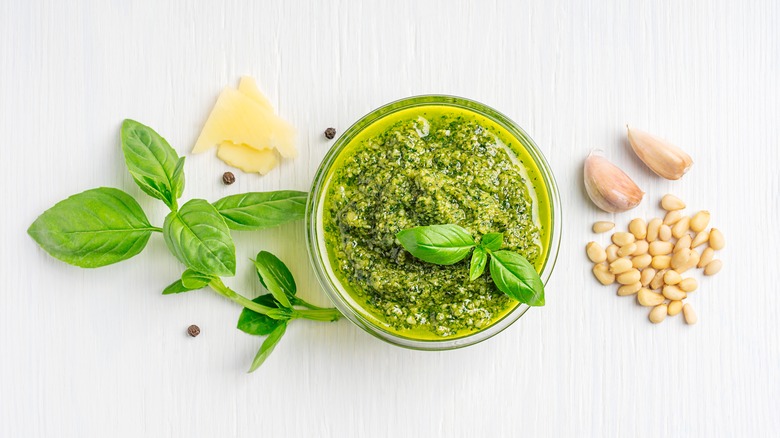What Is Pine Nut 'Metal Mouth' And How Long Does It Last?
Anyone having unfortunate flashbacks to adolescence can rest assured this type of metal mouth has nothing to do with crooked teeth. Getting so-called "metal mouth" today is most likely tied to eating, specifically consuming pine nuts. These nuts (which are actually the seeds inside pine cones) aren't as common for snacking compared to peanuts, cashews, almonds, or walnuts, but are often used in cooking or to garnish dishes: blended into pesto, sprinkled atop salads, mixed into rice dishes, and scattered across veggie slides, like grilled asparagus with romesco. The nuts are typically harmless for people without nut allergies, though Healthline cautions an uncommon anaphylactic reaction to pine nuts occasionally happens.
Pine nut metal mouth, also known as simply "pine mouth," is different. It's not an allergy, but a temporary condition. It's essentially a metallic or bitter taste in the mouth experienced after eating pine nuts, which can be alarming or just plain annoying. The symptom usually appears within 48 hours and has been known to hang around for up to 14 days. For some people, it dissipates gradually over time or becomes unnoticeable in as few as three or four days.
Pine nut metal mouth is nothing new, but the mystery remains even after extensive research by food-industry experts. Both mold and bacteria have been ruled out, and the cause of this frustrating condition remains unknown.
Sometimes it just happens
Early studies on metal mouth syndrome focused on causes and effects, describing the condition in terms like "taste disturbance" or "unpleasant oral upset." Those who've actually lived for two weeks with the bitter metallic tinge inside their mouths would likely concur. That's especially true because any other foods consumed while the symptoms exist can absorb the taste and even intensify it.
An abstract published in 2012 by the United States Department of Agriculture pinpointed a certain type of pine nut as the culprit from 45 species evaluated: the Pinus armandii, which grows primarily in China and exports specifically from the Shaanxi and Shanxi regions. The NSW Food Authority in Australia found similar connections in the same year, leading to control measures and restrictions of the species from approved edible tree-nut designations. However, as the years have progressed, there's a general consensus that place of origin or a particular pine-nut species can't be conclusively tied to the perplexing condition. That leaves only a single given: the perpetrator is pine nuts consumed in their raw form.
Since pine nuts, also known as pignolias, are almost always sold raw and often used that way in recipes, that leaves just about anyone vulnerable to join the "metal mouth club." Fortunately, it only happens to some people, and there are no known, lasting adverse effects.

